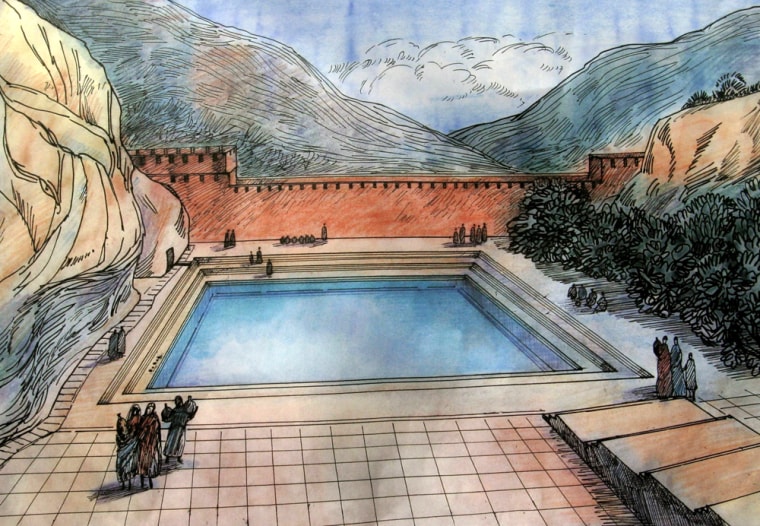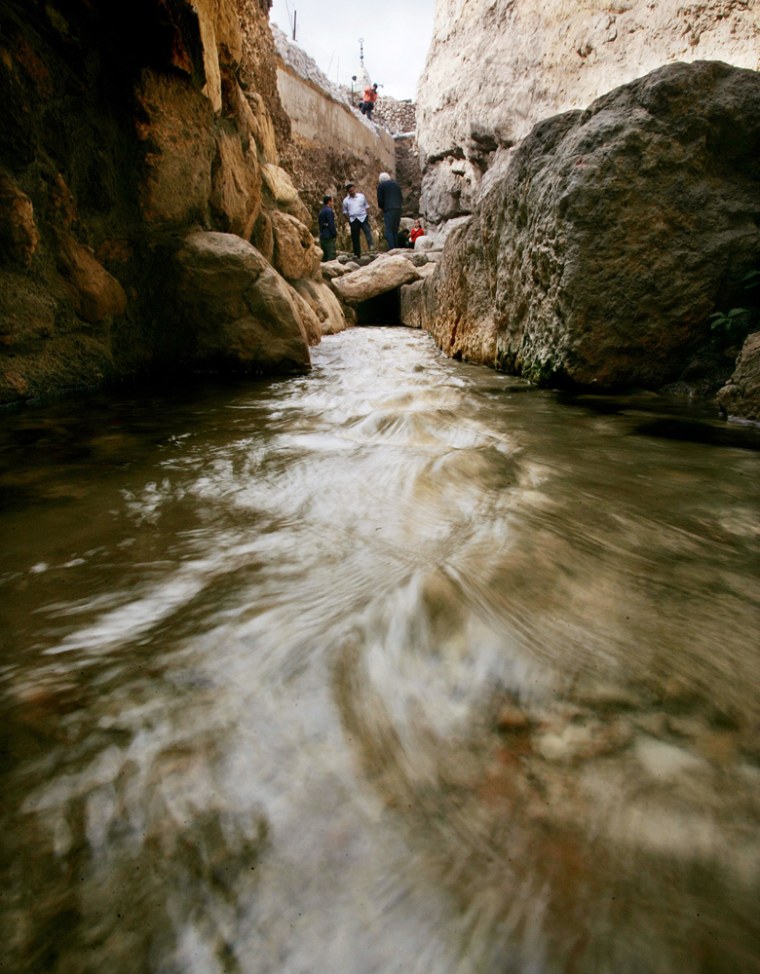Archaeologists in Jerusalem have identified the remains of the Siloam Pool, where the Bible says Jesus miraculously cured a man's blindness, researchers said Thursday — underlining a stirring link between the works of Jesus and ancient Jewish rituals.
The archaeologists are slowly digging out the pool, where water still runs, tucked away in what is now the Arab neighborhood of Silwan. It was used by Jews for ritual immersions for about 120 years until the year 70, when the Romans destroyed the Jewish Temple.
Many of Jesus' acts are directly linked to Jewish rituals, and the miracle of the blind man is an example. According to the Bible, the man was undergoing ritual immersion in the Siloam Pool for entry into the Temple compound, and Jesus used the occasion to cure his blindness.
'100 percent sure'
In the last four months, archaeologists have revealed the pool's 50-yard (50-meter) length and a channel that brought in water from the Silwan spring. In the past week, a section of stone road that led from the pool to the Jewish Temple was uncovered.

"The moment that we revealed and discovered this four months ago, we were 100 percent sure it was the Siloam Pool," said archaeologist Eli Shukron.
"We know today that the Siloam Pool is connected to the Temple Mount. There is a road that connects the two elements. The entire system is clearer today," Shukron said.
Stephen Pean, a Bible scholar, said the pool's waters were considered so pristine they could purify even a leper.
Pean said Jesus likely chose to cure the blind man using the purest water available, because people with any disabilities were barred from the temple.
"The whole point is that people will not only be healed physically but also healed spiritually," he said. "This discovery helps bring the Gospel alive in the context of Jewish practice."
Artifacts confirm identification
The archaeologists excavating the site are with the Israeli government's Antiquities Authority. They found biblical-era coins marked with ancient Jewish writing, along with pottery shards and a stone bottle cork — helping them confirm the area was the Siloam Pool.
The stone-lined pool has steps leading into it from all sides, said Ronny Reich, a University of Haifa archaeologist. One side of the pool, two corners, a part of the esplanade around it and the water channel leading to it have been uncovered, he said.
Jesus, according to the New Testament, put clay on a blind man's eyes and then sent him to wash them out in the pool's purifying waters, giving him sight.
Jews, who traditionally made three pilgrimages a year to Jerusalem, would immerse themselves in the Siloam Pool before heading down the stone pathway to the temple. They also used the pool for drinking water and camped around it.
"Jesus was a pilgrim in Jerusalem ... so this would be a natural place for him to be ... enjoying the water supply," Reich said.
The Israeli Antiquities Authority is negotiating with the Greek Orthodox Church, which owns the land, to continue the dig. Archaeologists believe the pool is under the thick green covering of an overgrown vegetable garden and several large trees.
Nine-foot-tall (3-meter-tall) stone walls topped by old sewage and drainage pipes separate the new discovery and the pool's stone steps, uncovered in the 1960s. Now archaeologists hope to remove the old pipes and connect the esplanade and water channel to the steps that lead into the pool.
"Here we can judge and see how large it is — the grandeur of the city in those days," Reich said.
